Have you heard about Taito Ward in Tokyo? As one of the 23 wards of Tokyo, Taito boasts various unique neighbourhoods and areas, offering different attractions and sights to explore. For a comprehensive guide to Taito Ward, including its distinct areas, top attractions, history, accommodation options, and more, check out this ultimate Taito Ward area guide.
A Quick Primer to Taito Ward

Taito Ward is the original downtown area of Tokyo, where the oldest downtown emerged during Tokyo’s former name, Edo. The name “Taito Ward” was established in 1947, post-World War II, when the district was divided into Shimotani and Asakusa, both formerly part of Tokyo City.

Asakusa stands as an urban area in front of two major ancient temples: Senso-ji Temple, the oldest temple in Tokyo with over 1,370 years of history, and Kan-eiji Temple in Ueno, a temple built to seal the demon’s gate. Asakusa’s history of postwar prosperity as a popular entertainment district stems from its past, with various artisans and people involved in the performing arts residing here.

Venturing further into areas like Senzoku, Nihonzutsumi, Imado, and Hashiba, known as Oku-Asakusa, reveals a special bathhouse district preserving the legacy of Yoshiwara Yugaku, a major entertainment district in Edo, boasting over 400 years of history. Other notable sites include Yamaya, one of Japan’s largest doyakai during the high-economic growth period, Hongyuji Temple housing Danzaemon’s grave, and a cluster of leather industry factories along the Sumida River.
Additionally, the area along the Sumida River, where leather industry factories are concentrated, offers a glimpse into the industrial past that contributed to Japan’s economy.

On the other hand, Ueno Station’s major shopping district, the spiritual home of Tohoku people who migrated to Tokyo, exemplifies postwar Japan’s chaos, ranging from Ameyoko, a bustling market, to Higashi-Ueno Kimchi Yokocho, an old Korean town.
Living in Taito Ward

The residents, known as “chaki-chaki-no-Edokko,” have inhabited Taito Ward, Tokyo’s oldest downtown area, for generations. The term “chaki-chakki,” originally written in Chinese characters, designates those who have resided in downtown Tokyo for three or more generations (and who are the eldest sons).
Although traditions have been preserved by the local residents, post-war, many people left Taito Ward due to overcrowding and resettled in suburbs like Sumida Ward and Katsushika Ward, forming the “New Edokko Cultural Bloc.”

Asakusa, also dubbed the “town of yakuza” due to its chivalrous history in the Edo period, maintains its cultural pride, evidenced by the Sanja Festival where yakuza proudly parade atop portable shrines, displaying their elaborate tattoos while defiantly glaring at the police. If you enjoy the downtown vibe and aren’t deterred by outlaws, living in Taito Ward might appeal to you.
Characteristics of Taito Ward

Taito Ward is renowned for its temples, traditional theatres, craftsmen’s workshops, and other emblematic spots representing Tokyo. With numerous attractions, it’s challenging to decide where to begin sightseeing.
Asakusa, often associated with tourism, holds many undiscovered gems such as the majestic Thunder God and Wind God statues at Kaminarimon Gate, quaint back alleys, and scenic dining spots along the Sumida River.
Centrally located in Tokyo, Taito Ward is bordered by Arakawa Ward to the north, Sumida Ward to the east, Chuo Ward to the south, and Bunkyo and Chiyoda Wards to the west. Since the Edo period, Taito Ward has flourished as a tourist hub, with Ueno and Asakusa as its main attractions.
Today, Asakusa remains a popular destination for both locals and foreigners, often featured in media reports. While it retains its downtown charm, Asakusa has evolved into a commercial hub with a modern urban landscape.

Convenience is another hallmark of Taito Ward, particularly Ueno Station, known as the “Gateway to East Japan” and a major terminal station. From here, travellers can access the Tohoku Shinkansen, Joetsu Shinkansen, Nagano Shinkansen, as well as conventional railways, JR, private railways, and subways, offering unparalleled convenience.
Taito Ward is renowned for its bustling towns like Asakusa and Ueno, along with other popular areas like Iriya, Asakusabashi, and Kuramae. Traditional shopping streets, supermarkets, and individual stores cater to diverse shopping preferences. Despite some areas having a reputation for being slightly unsafe, they are generally safer than other parts of Tokyo.
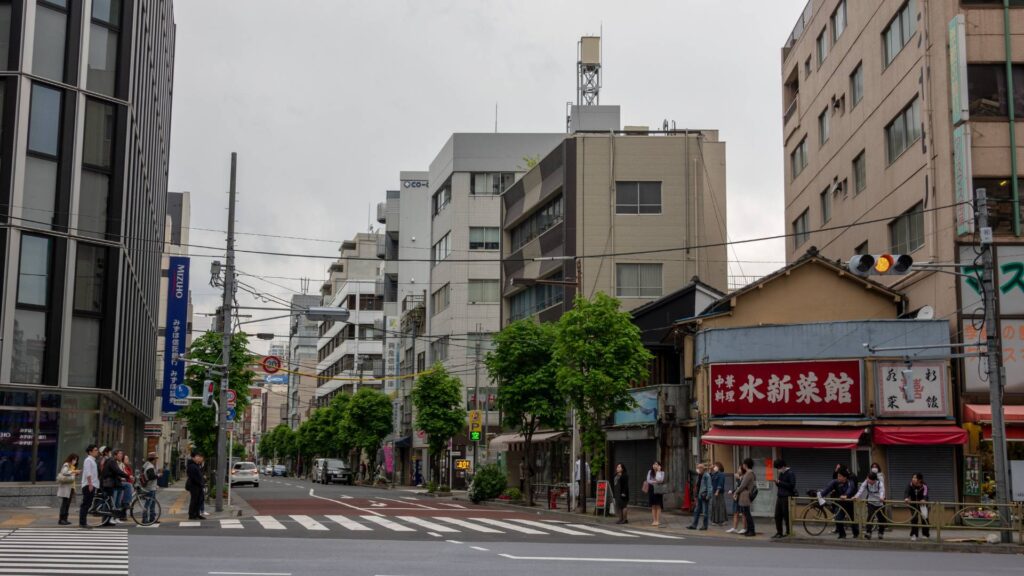
The area’s nostalgic architecture provides an ideal backdrop for photography, while its downtown ambience offers a sense of familiarity to any Japanese visitor.
History of Taito Ward

During primitive times, most of the area was submerged or marshland, but during the Jomon Period, earth and sand were transported to the Sumida River via the Tone and Ara Rivers, converting the area into land during the Yayoi Period.
Sensoji Temple, a symbol of the district, dates back to 628, making it the oldest temple in Tokyo. In the early Edo period, the area thrived as a port city, with Ueno becoming the gateway to Kan-eiji Temple and Sensoji Temple’s vicinity emerging as Japan’s busiest shopping area.

The Meiji Restoration saw clashes between the shogunate’s forces and the new government, resulting in the destruction of most of Kan-eiji Temple’s pagodas. Subsequently, the area became a cultural hub with the establishment of art galleries, museums, and a zoo. In 1947, Asakusa and Shimotani wards merged to form Taito Ward, deriving its name from the elevated plateau of Ueno and Asakusa situated east of Ueno.
Areas in Taito City Ward
Along the JR Line
(1) Ueno 上野

Ueno Station used to be a terminus for night trains from Tohoku, giving it a special emotional attachment to the previous generation. There are many places to see, such as Ameyoko, where people selling counterfeit brands are roaming around; the underground food street for Chinese, Korean, and Southeast Asian foreigners; Nakamachi-dori with many suspicious Korean agashi; Higashi-Ueno Kimchi Yokocho; and Pachinko Village in the postwar days, and so on.
(2) Okachimachi 御徒町
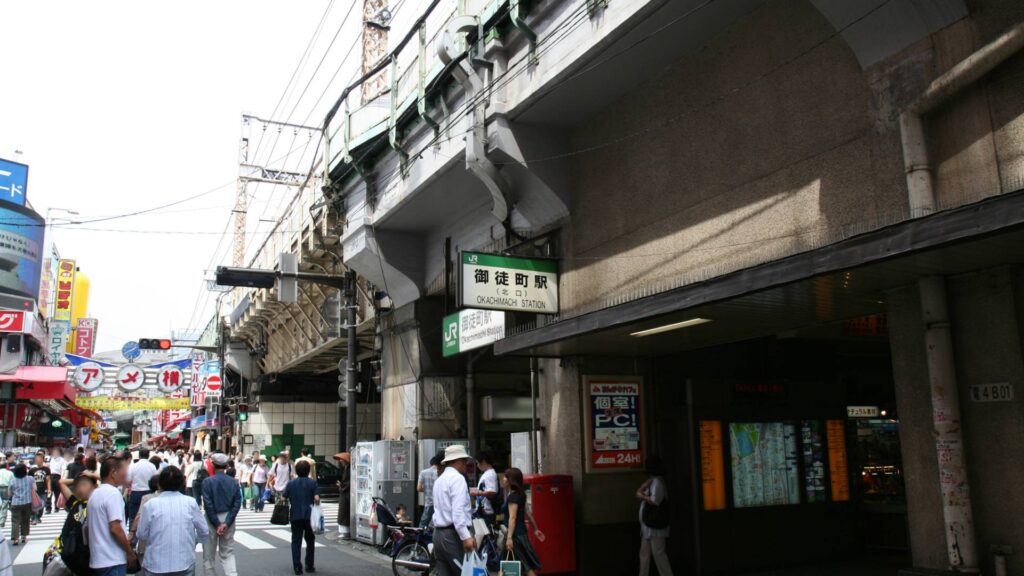
Credit: PRiMENON
A town of cheap goods shopping, which is a continuation of Ameyoko. The landmark Yoshiike has been renovated and invaded by UNIQLO. Here, you can also find Naka-Okachimachi, with purple buildings directly above Naka-Okachimachi station. There are many foreigners and old people with plastic bags from Takeya, the cheapest store in town. Recently, the area under the elevated railway tracks has been transformed into a chalet-style conscious mall, a sign of transformation.
(3) Uguisudani 鶯谷

Credit: Hideyuki KAMON
The most gloomy and suspicious scenery in front of the station along the Yamanote Line. The only thing to be seen in the area are love hotels and Japanese inns, but in the past, the area was known as “Kuretake no Negishi no Sato,” a place associated with Masaoka Shiki. The Yamanote side is an educational area close to Kan-eiji Temple and the Tokyo National Museum. Uenosakuragi is also a semi-luxury residential area connecting the Ueno and Yanaka areas.
(4) Asakusabashi 浅草橋
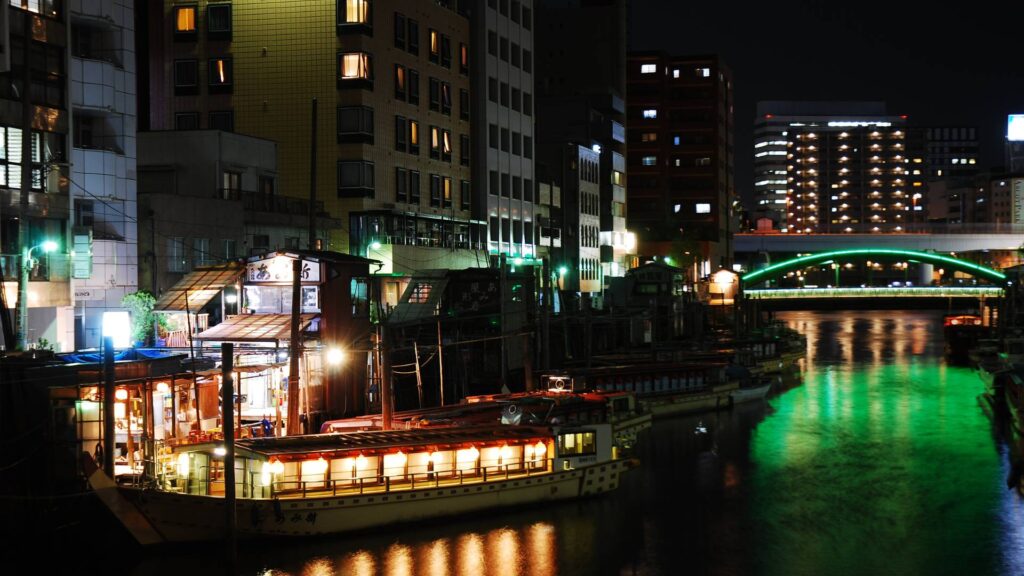
Credit: Usaginomedama@you
Tourists who do not know the geography of Tokyo often get off at this station, mistaking it for Asakusa. The Edo Street is lined with toy and doll wholesale stores, and old pre-war houses and warehouses line the elevated tracks of the Sobu Line. Yanagibashi, facing the Kanda River, used to be a red-light district, but the geiko association has disbanded. At night, the whole town becomes a bed for the homeless, who spend the night on the streets collecting cardboard boxes to make ends meet.
Akihabara 秋葉原
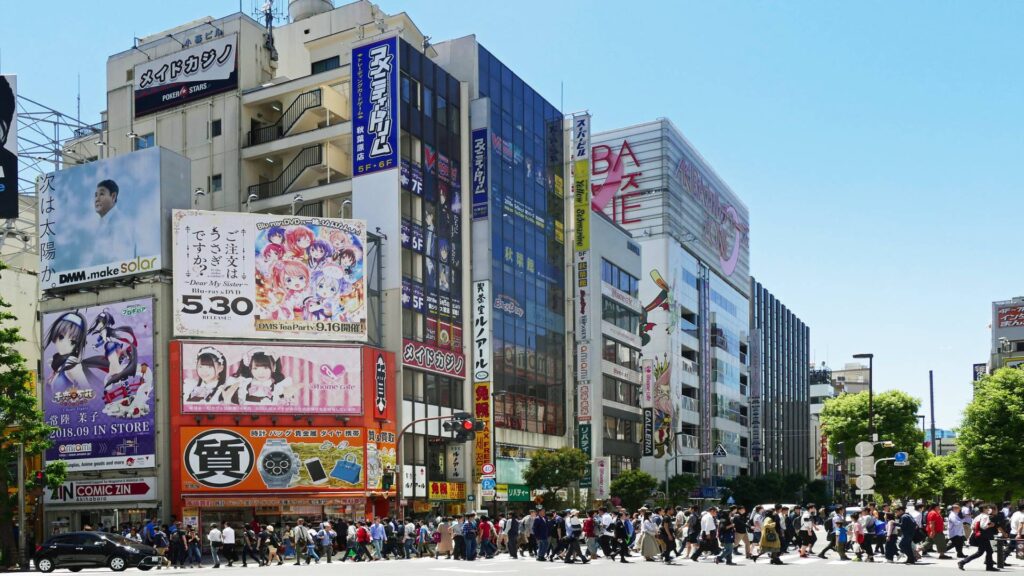
Credit: Usaginomedama@you
The area around the station and the electronics district is in Chiyoda Ward, but there is a district called Akihabara, Taito Ward. A recycling company that accepts cardboard boxes 24 hours a day is in operation. It may be a remnant of a former fruit and vegetable market, but even now it is a favorite spot for homeless people in the area to make a few coins.
Nippori 日暮里
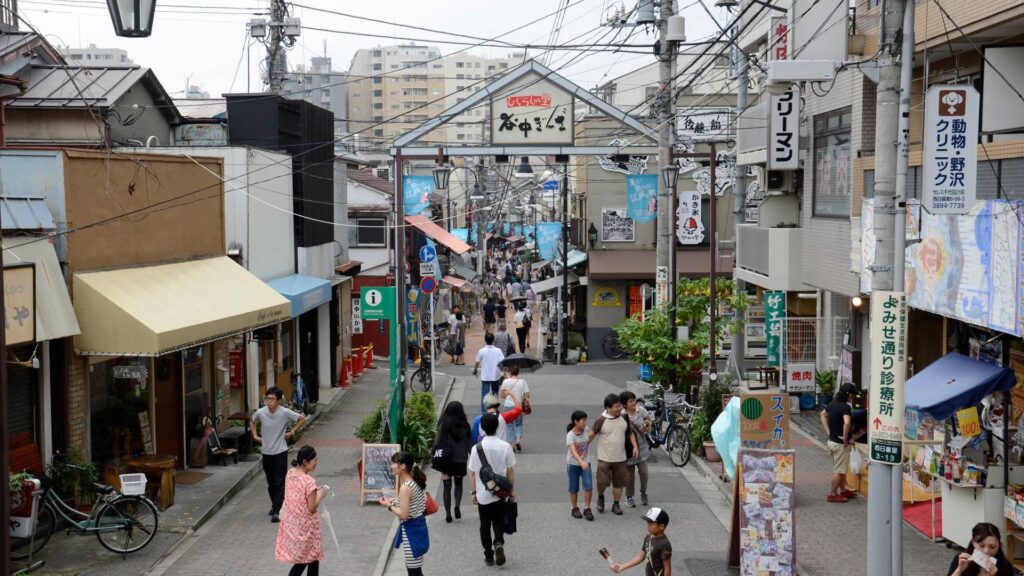
Credit: Usaginomedama@you
The gateway to Yanesen, a conscious downtown walking spot. This is the nearest station to Yanaka Ginza shopping street, Yanaka Cemetery, and some other areas in Yanaka.
Along the Subway Line and TX Line
(5) Inarimachi 稲荷町
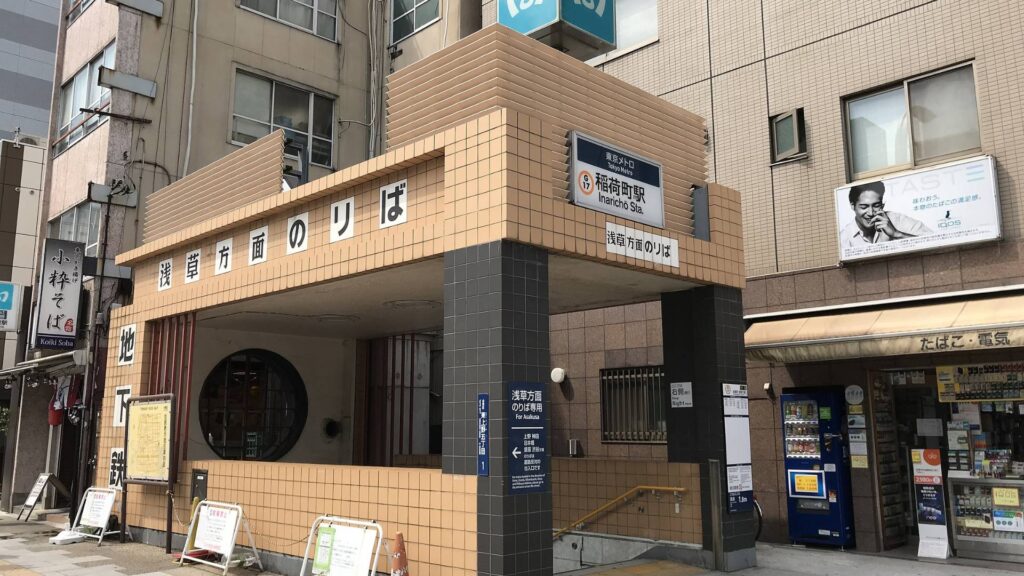
Credit: Kansai-good
On the eastern edge of the Ueno area, the Butsudan (Buddhist altar) shop street along Asakusa-dori is a wonderful sight. The “Uenoshita Apartment,” a survivor of the Dojunkai Apartment that existed until a few years ago, has been demolished. The building at the entrance to the Ginza Subway Line is an antique, still in use as it was when it opened in 1927.
(6) Tawaramachi 田原町

Credit: tecking
On the western edge of the Asakusa area, and close to Kappabashi Togutsu-gai, Tawaramachi is a wholesale district for kitchen equipment and tableware. There are many small and medium-sized temples of the Higashi Honganji and Shinshu Otani sects, and a terrific back-alley zone of narrow row houses surrounded by temples still exists. It is also close to Nishi Asakusa, where the gay bar district is located.
(7) Asakusa 浅草
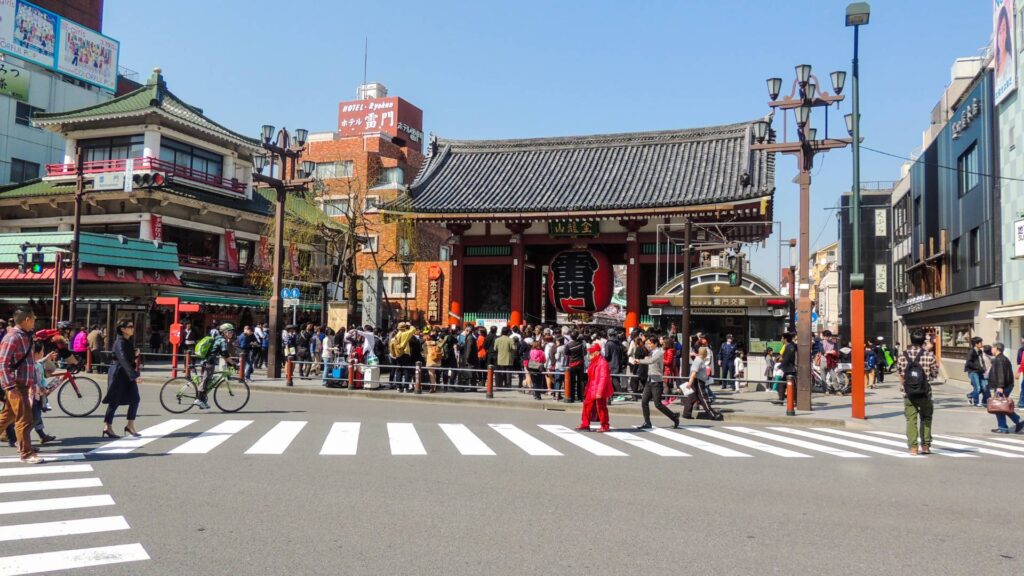
This neighbourhood is located in front of Sensoji Temple, the oldest temple in Tokyo, and the most popular tourist spot for foreign tourists. Roku-ku Street was the center of popular entertainment in the Showa period, and Hatsune Koji is famous for its wisteria trellises.
Along the Sumida River overlooking the Poop Building is a sleeping place for homeless people. The Asakusa underground shopping mall is also popular, and the smell of yakisoba noodles with sauce fills the air.
(8) Kuramae 蔵前
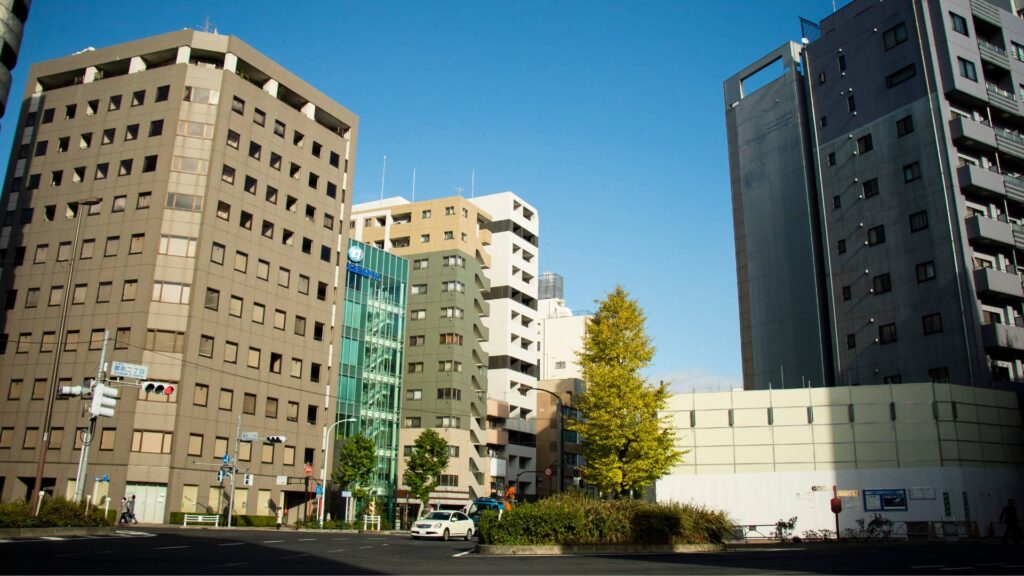
This area received its name from the rice granaries which lined streets during the Edo period. Today, Kuramae is known for its population of young craftspeople and creatives. Affordable rent has allowed the area to grow into a hip, coffee-shop and eatery-lined space.
(9) Iriya 入谷

Credit: jun560
Shigenji Temple is famous for the Kishimojin (goddess of childbirth) of Iriya. It is famous for its summer festival, Asagao Matsuri (Morning Glory Festival). The love hotel district of Uguisudani is also within walking distance. The pre-war poorhouse Shimogaya Mannencho was located around the current Kita-Ueno 1-chome and Higashi-Ueno 4-chome.
(10) Minowa 三ノ輪

Credit: jun560
Minowa is famous for Jokanji Temple, a temple where prostitutes from the Yoshiwara brothels are laid to restThe temple is situated in Minami-Senju, Arakawa Ward, but Minowa is the nearest station to Yoshiwara if you are going on foot. The former Ryusenji-machi in Shimotani, now Ryusen in Taito Ward, is associated with Ichiyo Higuchi, the portrait on the 5,000-yen bill.
(11) Shin-Okachimachi 新御徒町

Credit: Nesnad
Shin-Okachimachi is a station on the Toei Oedo Line and Tsukuba Express, located on the eastern edge of Okachimachi. Satake Shopping Street, which is said to be the second oldest shopping street in Japan, is located here. After passing through there, you will find Taito Kojima Apartments, a high-rise metropolitan housing complex, and “Okazu Yokocho” in Torikoshi, an old-fashioned shopping street.
Other Areas
Yoshiwara 吉原

Credit: Tyoron2
Yoshiwara is one of the most unique bathhouse districts in Japan, originating from Yoshiwara Yugaku. This neighbourhood is among the most vibrant districts in Japan and has endured for about 400 years since the days of the former Yoshiwara in what is now Nihonbashi Ningyocho.
Even today, traces of the vivid history of the Yoshiwara era remain everywhere, and the causeway in front of the Yoshiwara Daimon gate is lined with long-established sakura pot shops and tempura shops.
Yamaya 山谷

Credit: Kounosu
The area comprises present-day Nihonzutsumi and Kiyokawa in Taito Ward. Yamaya is known as a “do-ya-machi,” or “doorya-gai,” an area of crowded simple lodging houses for day laborers that sprang up in the postwar period. The area has become a twin of Kamagasaki in Nishinari-ku, Osaka City, but many of the workers are now aged and live in welfare apartments and simple lodging houses while receiving public assistance. On the other hand, many of the simple lodging houses have been converted into guesthouses for foreign tourists.
What to do in Taito City Ward
Asakusa-jinja Shrine 浅草神社
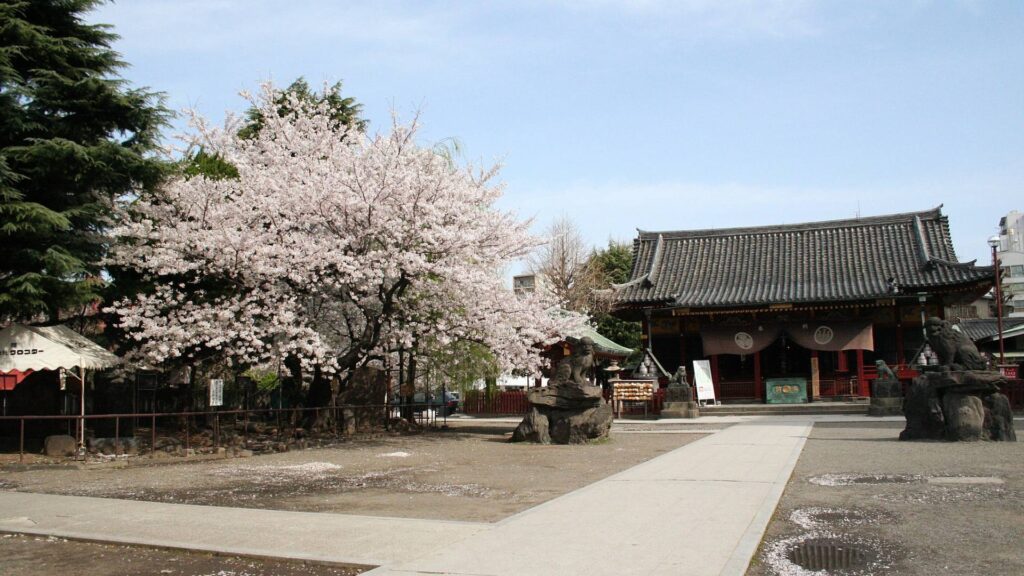
Credit: 浅草神社
This shrine is located adjacent to Sensoji Temple. It is said to have been built between the late Heian and Kamakura periods. The shrine enshrines the Hinokuma brothers, who discovered the Kannon statue, and its founder, Hajinomatsuchi no Mikoto.
Find out more about Asakusa-jinja Shrine here on Google maps.
Sensō-ji浅草寺

The oldest Buddhist temple in Tokyo, it is visited by more than 30 million people every year from Japan and abroad. The landmark Kaminarimon (Thunder Gate), the temple grounds, and the five-story pagoda are among the many highlights of the temple. The approach to the temple is known as “Nakamise-dori,” where visitors can enjoy retro food and drink.
Find out more about Sensō-ji here on Google maps.
Ueno Zoo 上野動物園
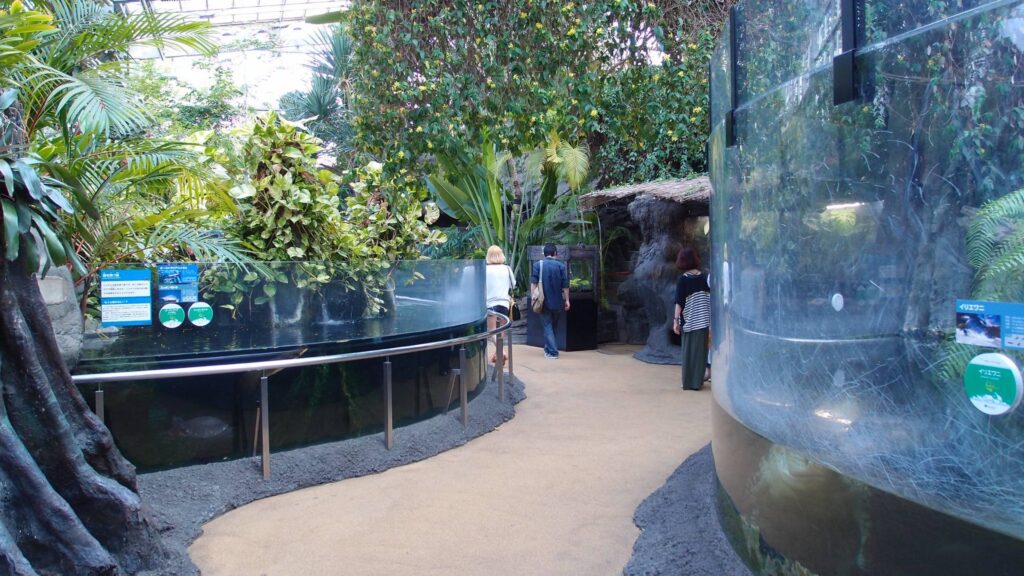
Credit: Guilhem Vellut
The Ueno Zoo is located in Ueno Onshi Park in Taito-ku, Tokyo. Opened in 1882, it is the oldest zoo in Japan. The zoo is home to more than 500 species of animals, and is particularly famous for its giant pandas. Since the 1990s, the zoo has been improving its breeding environment, making it a place where visitors can observe animals in a more naturalistic state.
Find out more about Ueno Zoo here on Google maps.
Tokyo National Museum 東京国立博物館
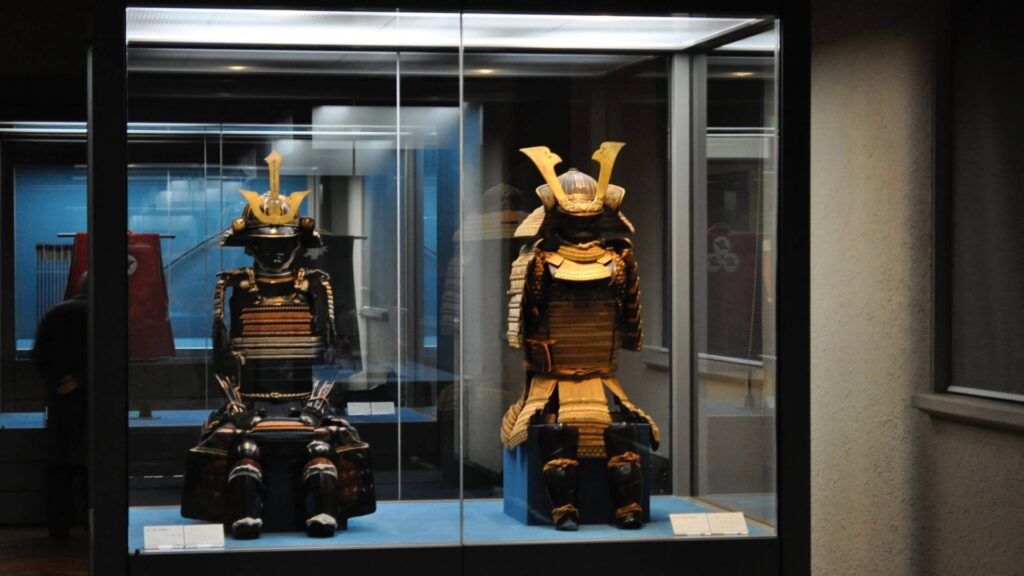
Credit: David McKelvey
The National Museum is located in Ueno Onshi Park. It was founded in 1872. It has six exhibition halls, including the main building, as well as an archive. The museum has a vast collection of over 116,000 items of oriental art and archaeological artifacts, mainly from Japan. The collection includes many national treasures and important cultural properties. Special exhibitions are held three to five times a year.
Find out more about Tokyo National Museum here on Google maps.
National Museum of Nature and Science 国立科学博物館
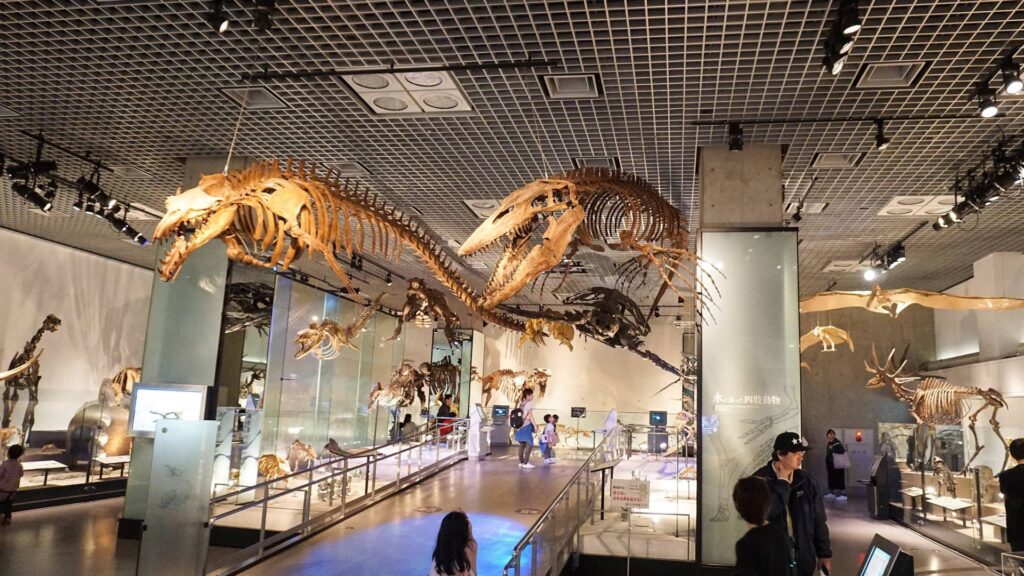
Credit: Natrium Chlorine
Established in 1877, this is one of Japan’s largest comprehensive science museums. Permanent exhibitions include the “Earth Pavilion,” which focuses on the history of life on Earth and the history of humanity, science and technology, the “Japan Pavilion,” which focuses on Japanese nature and the history of the Japanese people, and “Theater 360,” which displays a 360-degree video screen. Special exhibitions are held several times a year. On holidays, the museum is a popular spot with many people standing in line to visit.
Find out more about National Museum of Nature and Science here on Google maps.
Tokyo Metropolitan Art Museum 東京都美術館
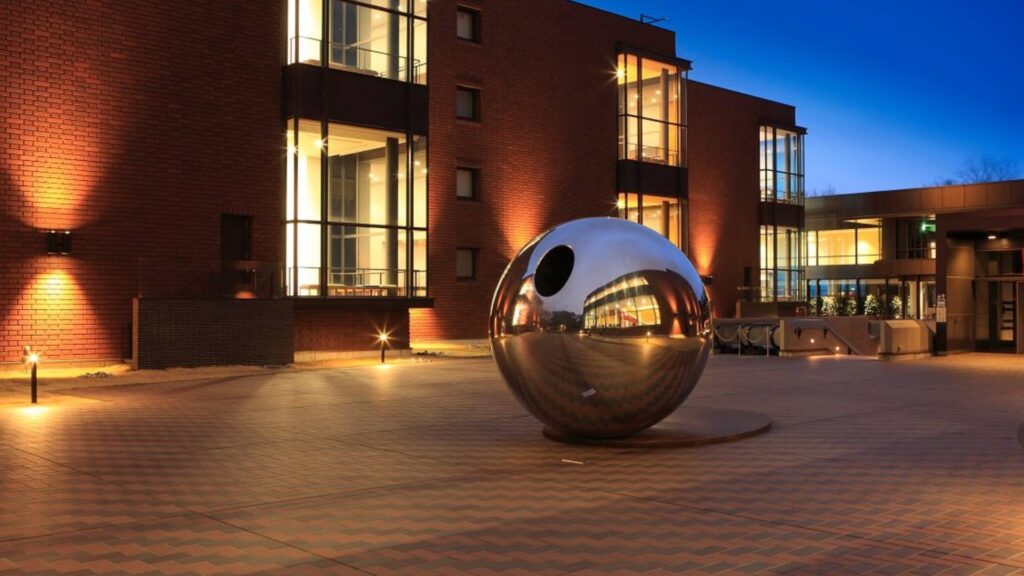
Credit: Tokyo Metropolitan Art Museum
Located in Ueno Onshi Park in Taito-ku, Tokyo, the Tokyo Metropolitan Art Museum was Japan’s first public art museum, and was opened in 1926 (Taisho 15). With the goal of being a “gateway to art” open to all, the museum holds a variety of exhibitions throughout the year, including special exhibitions introducing masterpieces from Japan and abroad, public exhibitions by art organizations, and collection exhibitions focusing on works of calligraphy. The museum also has a café where visitors can enjoy coffee and light meals, a restaurant boasting course meals, and a museum store.
Find out more about Tokyo Metropolitan Art Museum here on Google maps.
Ueno Park 上野恩賜公園
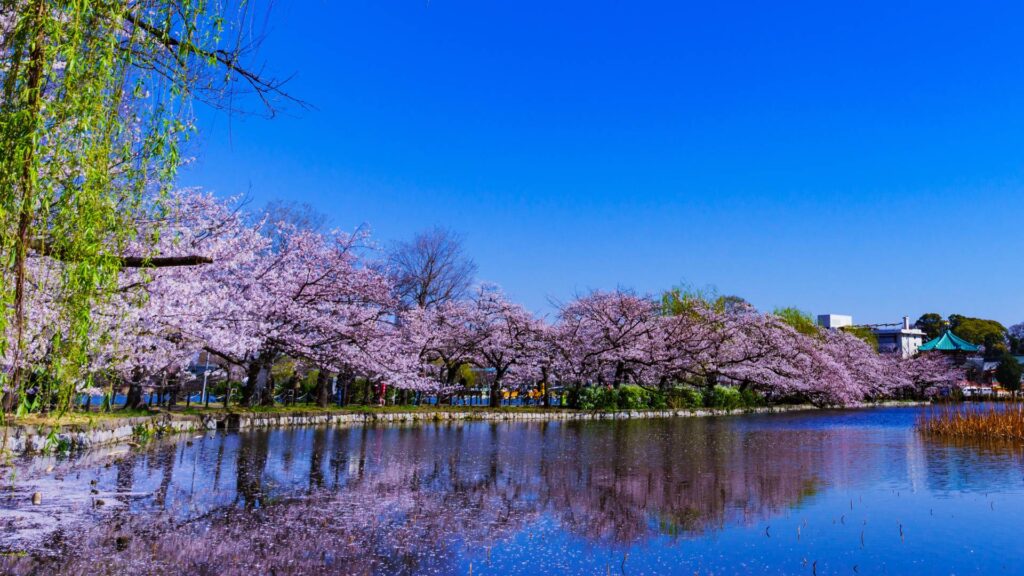
In the Edo period, it was the precincts of Kan-eiji Temple on Toeizan. The park has been selected as one of the 100 best cherry blossom viewing spots in Japan, and is crowded with many cherry blossom-viewing visitors in spring. The famous statue of Takamori Saigo stands in the park, and cultural facilities such as the Tokyo National Museum, the National Museum of Nature and Science, the National Museum of Western Art, and the Ueno Zoo are scattered throughout the park.
Find out more about Ueno Park here on Google maps.
National Museum of Western Art 国立西洋美術館

Credit: The National Museum of Western Art
Located in Ueno Onshi Park in Taito-ku, Tokyo, this museum specialises in collecting and exhibiting Western art. The building, designed by French architect Le Corbusier and registered as a World Heritage Site in 2016, is one of the highlights of the museum.
Based on the Matsukata Collection, the collection of industrialist Kojiro Matsukata, donated and returned by the French government, the museum’s permanent exhibits include Western paintings from the late Middle Ages to the early 20th century, such as Monet and Renoir, and modern French sculpture. Special exhibitions are held several times a year here.
Find out more about National Museum of Western Art here on Google maps.
Asakusa Hanayashiki 浅草花やしき
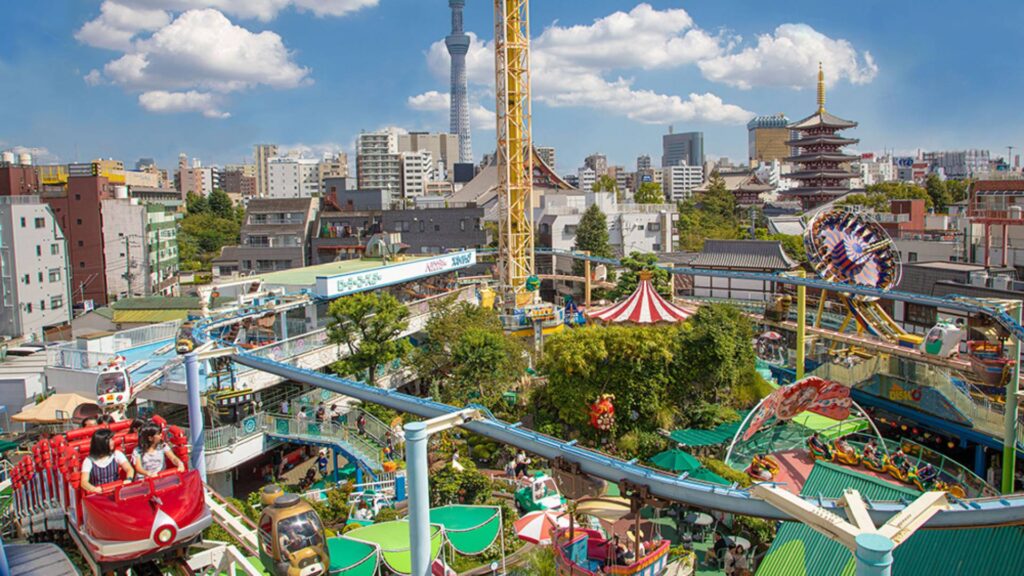
Credit: Hanayashiki
Asakusa Hanayashiki is located on the west side of Sensoji Temple. It opened in 1853 as a flower garden and is said to be the first amusement park in Japan. The park has a retro atmosphere that can only be created by the long history of Hanayashiki.
The popular “Space Shot” is the strongest and fastest attraction in the history of Hanayashiki. From the top, visitors can enjoy a panoramic view of Asakusa. It is a popular leisure spot for families and couples alike.
Find out more about Asakusa Hanayashiki here on Google maps.
The Ueno Royal Museum 上野の森美術館

Credit: Ueno Royal Museum
The Ueno Royal Museum is located in Ueno Park. Since its opening in April 1972, the museum has introduced and exhibited art works of various genres. The museum does not have a permanent collection, but holds original exhibitions on a regular basis. The museum has also added an annex gallery on the first floor where small exhibitions can be held. The museum also offers an art school, with a wide range of course levels from beginner to expert.
Find out more about The Ueno Royal Museum here on Google maps.
Asakusa Engei Hall 浅草演芸ホール
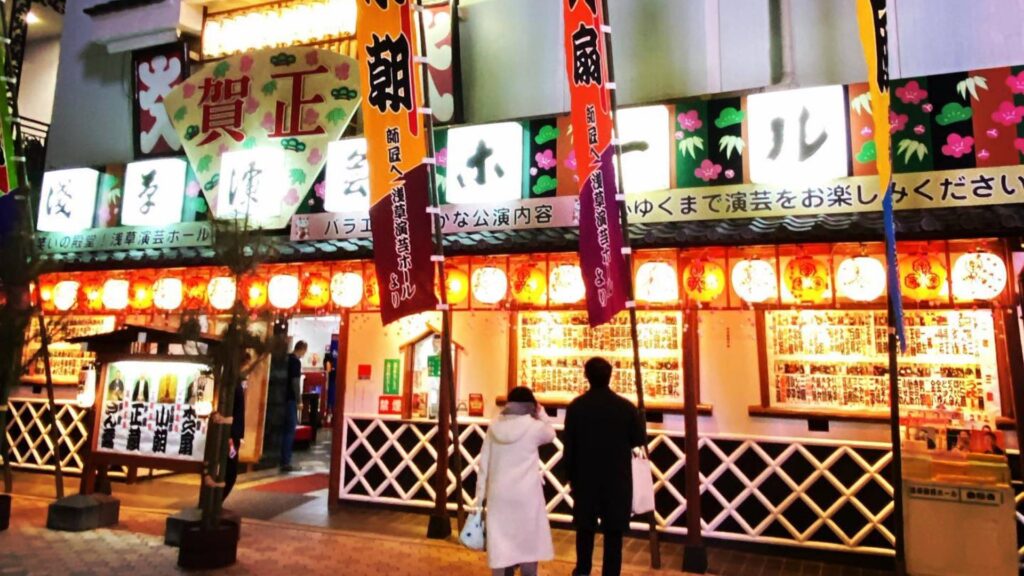
Credit: Asakusa Entertainment Hall
Asakusa Engei Hall offers rakugo performances year-round. In addition to rakugo, there are also programs such as manzai, comedy, magic, and impersonation. Since its opening in 1964, the theater has gained popularity as a hall of laughter and is famous for having produced Kinichi Hagimoto, Beat Takeshi, Kiyoshi Atsumi, and others.
The theater is divided into daytime and nighttime sections, but since there is no changeover system, visitors can enjoy the show all day long. There is a store selling box lunches, drinks, and goods. Tickets are only available on the day of the performance.
Find out more about Asakusa Engei Hall here on Google maps.
Ueno Tosho-gu 上野東照宮

Credit: Ueno Toshogu
Ueno Tosho-gu was built in 1627 to worship Tokugawa Ieyasu. Yoshimune Tokugawa and Yoshinobu Tokugawa are also worshipped at the shrine. It is located in Ueno Onshi Park. Since its reconstruction in 1651, the shrine has been spared from loss due to natural disasters and war, and is a rare spot where visitors can see up close the authentic Edo architecture that retains the appearance of those days.
The shrine pavilion, also called “Konjikonden” (Golden Hall), is a gorgeous structure with gold leaf. The Botan Garden on the grounds of the shrine is famous for the Botan Festival held in spring.
Find out more about Ueno Tosho-gu here on Google maps.
Suzumoto Entertainment Hall 鈴本演芸場

Credit: Ueno Chuo-dori Shopping Street
About 5 minutes’ walk from the North Exit of JR Okachimachi Station. This rakugo performance hall in Ueno has been in operation for more than 150 years. In addition to Rakugo, the theater offers a wide variety of programs such as manzai and acrobatics.
The program changes every 10 days, and special performances are held on the 31st of every month. Doors open at 12:00 pm for the daytime performance and at 5:00 pm for the evening performance. Food and drink are allowed during the performance, so you can buy a box lunch at the store and enjoy the performance while eating.
Find out more about Suzumoto entertainment hall here on Google maps.
Kaneiji寛永寺
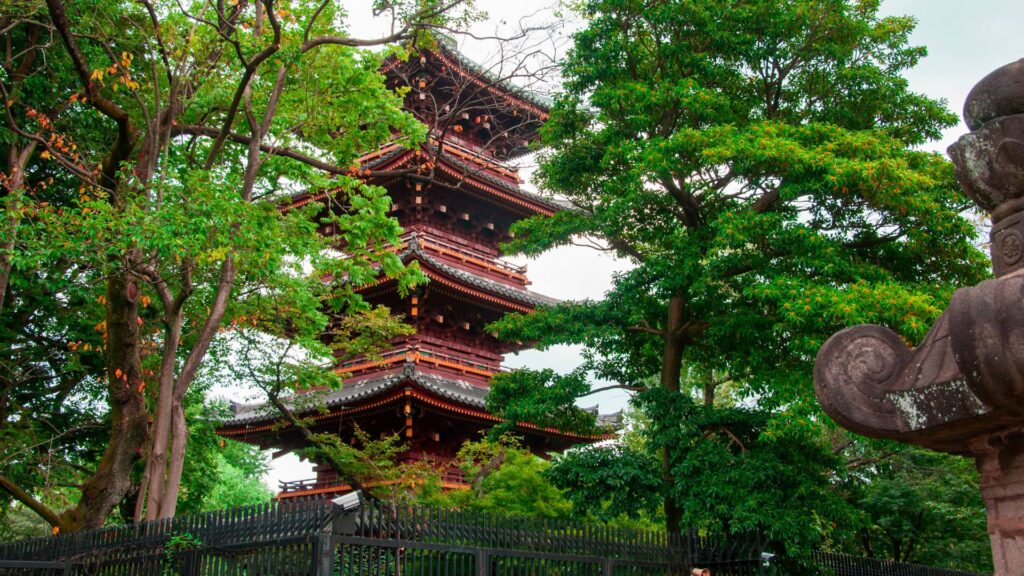
Kan’eiji Temple was founded in 1625 by the great priest Tenkai. The temple originally had a vast site centering on the current Ueno Park area, but during the Boshin War, the Shogitai, an army of the former shogunate, holed up in the temple grounds, and the temple was the scene of the so-called “Ueno War,” in which most of the temple buildings were destroyed by fire. In addition, the land was confiscated during the Meiji period.
The temple is also one of the family temples of the Tokugawa family, and six shoguns are buried in the mausoleum of the successive Tokugawa shoguns on the temple grounds.
Find out more about Kaneiji here on Google maps.
Matsuzakaya Ueno Store 松坂屋 上野店

Credit: Matsuzakaya Ueno store
Okachimachi is a general merchandise store located in “2k540 AKIOKA ARTISAN”. Products made by craftsmen from all over Japan are gathered here. The themes are “Nippon no monozukuri” (Japanese craftsmanship) and “suguramono”.
The store offers a wide selection of Japanese specialties, Japanese-style sundries, souvenirs, and food products that are excellent, beautiful, fun, and seasonal. The store also invites makers to participate in events such as in-store sales demonstrations, hands-on experiences, and workshops.
Find out more about Matsuzakaya Ueno Store here on Google maps.
Himitsudōひみつ堂
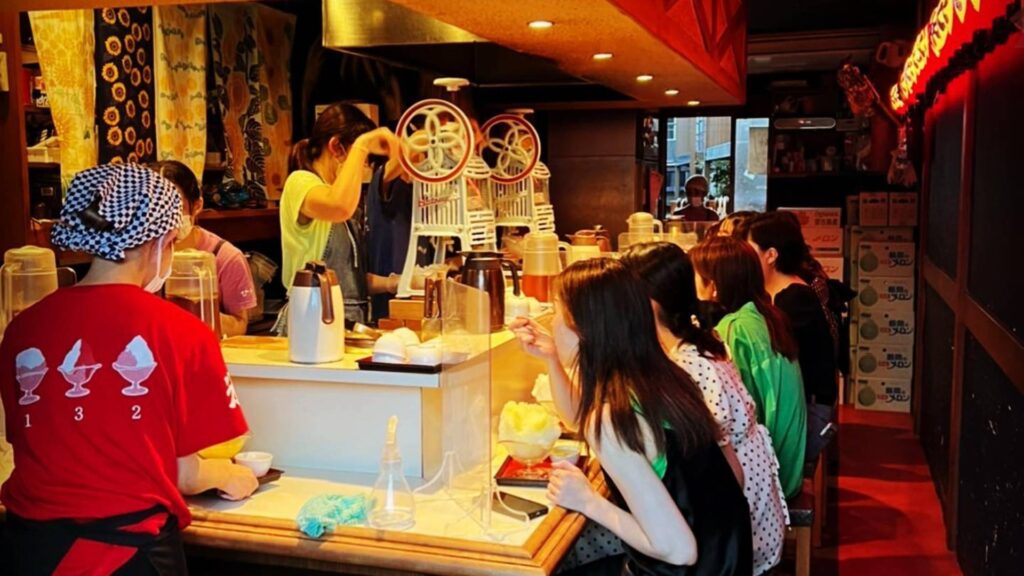
Credit: himitsudo132
Himitsudō, a renowned shaved ice establishment, began as a humble food cart in its early days. Situated in Yanaka, a traditional downtown area, the shop maintains its old-world charm. The shaved ice is meticulously hand-shaved in the traditional manner and crafted using naturally cold, slow-grown water. Rather than syrup, the ice is infused with the essence of fresh ingredients. Customers are even provided with a straw to enjoy the melted ice once it reaches a juice-like consistency. Such is its popularity that numbered tickets are distributed during peak hours.
Find out more about Himitsudō here on Google maps.
Imado Shrine 今戸神社
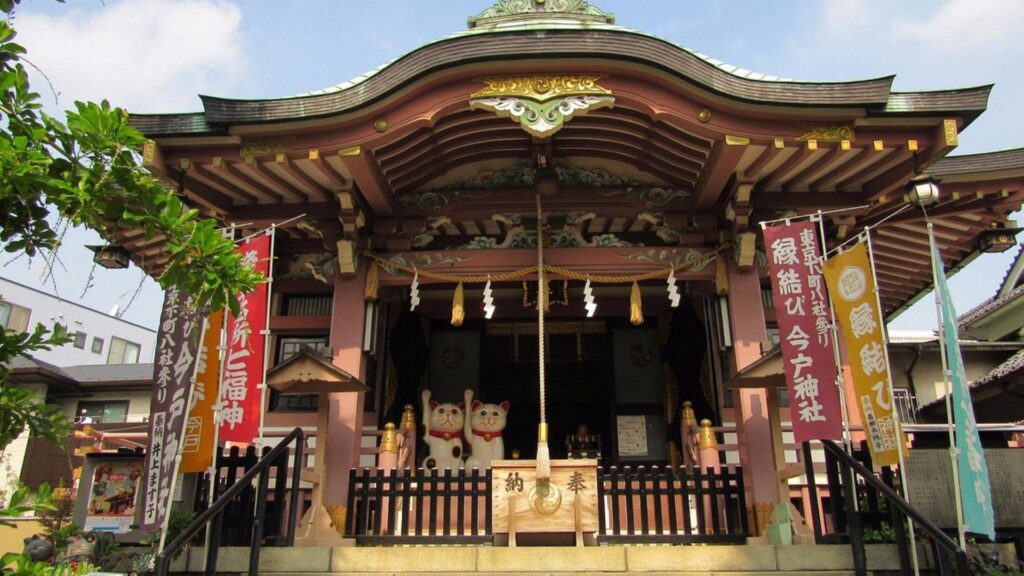
Credit: Sunshine
Imado Shrine in Taito Ward is known as the birthplace of beckoning cats. The shrine is said to have originated in 1063, when Minamoto no Yoriyoshi and Minamoto no Yoshiie, on the occasion of their defeat of the Oshu region of Japan, offered the Ishimizu Hachiman Shrine in Kyoto to the people of Imado.
There are various theories as to the origin of the beckoning cat, but it is said to have its roots in the Imado-yaki pottery that has been fired in Imado since the 16th century. There are many items related to Imado pottery on the shrine grounds, such as a monument to the birthplace of Imado pottery and a “nade-neko” (beckoning cat).
The shrine is a popular destination for women worshippers as a shrine of match-making, and also for history buffs as the place where Shinsengumi member Soji Okita ended his career.
Find out more about Imado Shrine here on Google maps.
Nakamise Shopping Street 仲見世商店街

Nakamise-dori is one of the oldest shopping streets in Japan, stretching 250 meters from Kaminarimon to Sensoji Temple. It is lined with stores that offer a taste of downtown Japan, from famous Tokyo sweets such as kibidango (sweet dumplings), kushidango (skewered dumplings), ningyoyaki (doll pancakes), and thunder mash, to souvenirs for foreign visitors. The beautifully uniformly decorated electric signs are also a must-see.
Find out more about Nakamise Shopping Street here on Google maps.
Ono Terusaki shrine 小野照崎神社
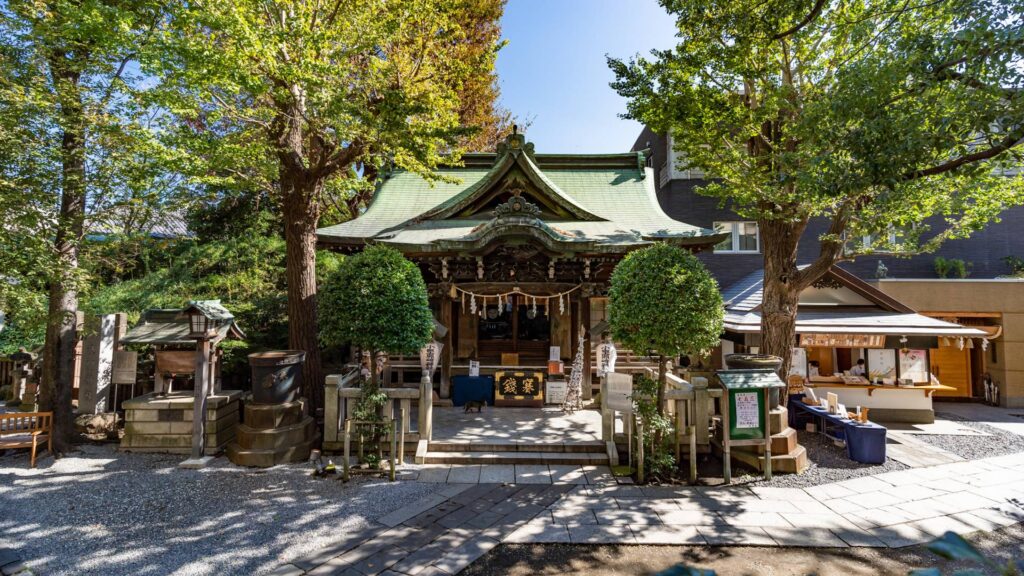
Credit: Onoterusaki
Ono Terasaki Shrine was built in Ueno in 852 as a shrine dedicated to Ono Takamura, a representative poet and scholar of the Heian period. The shrine was later moved to its current location, and in the late Edo period, Sugawara no Michizane was also enshrined. The shrine is said to have divine virtues in the performing arts as well as academics.
Find out more about Ono Terusaki shrine here on Google maps.
Sumida Park 台東区立 隅田公園

Sumida Park is located a 5-minute walk from Asakusa Station. The park is located along the Sumida River, and its main feature is that it stretches long from north to south. There are many historical sites on the grounds that are associated with haiku poets such as Masaoka Shiki and the Meiji Emperor, as well as a Japanese garden that utilizes a pond that once existed in the Mito Tokugawa Residence.
The area is renowned for its cherry blossoms, drawing visitors to its annual cherry blossom festival held every March. Additionally, it plays host to events like the Asakusa Yabusame horseback archery and the Sumida River Fireworks Festival. Presently, it has gained popularity as an excellent vantage point for viewing the Tokyo Sky Tree, particularly enchanting when the Sakura Bridge is illuminated at night.
Find out more about Sumida Park here on Google maps.
Kyu-Iwasaki-tei Gardens 旧岩崎邸庭園

Credit: Photo by Wiiii
Kyu-Iwasaki-tei Gardens is a metropolitan garden located in Taito-ku, Tokyo. The garden is a former residence of the Iwasaki family of Mitsubishi Zaibatsu, and is designated as a National Important Cultural Property.
The Japanese-style building is based on the shoin-style architecture, while the Western-style building is decorated in the 17th-century English Jacobean style. The skillful balance of these two styles had a great influence on later Japanese architecture.
Accommodations in Taito City Ward
Mimaru Tokyo Ueno East (4 stars)
The property is conveniently situated 1.5 kilometres from the Gate of the Former Residence of Koda Rohan, as well as the Front Gate of Honobo in Kanei-ji Temple, and just 1.7 kilometres from Shunsho-in Temple. While it lies 8 kilometres from the city centre, it is a mere 1.8 kilometres from Tozen-in Temple. Nearby attractions include Ryukoku-ji Temple, Genryu-in Temple, and the Ecute Ueno Shopping Mall.
Prostyle Ryokan Tokyo Asakusa (4 stars)
Featuring a bar, shared lounge, and views of the river, PROSTYLE RYOKAN TOKYO ASAKUSA is located 200 metres from the Great Tokyo Air Raid Memorial Monument. Popular points of interest near PROSTYLE RYOKAN TOKYO ASAKUSA include Honryuin Matsuchiyama Shoden, Ushijima Shrine, and Ekimise Asakusa. The nearest airport is Tokyo Haneda International Airport, 29 kilometres from the hotel.
Ryokan Asakusa Shigetsu (3 stars)
Situated in the Asakusa area, Ryokan Asakusa Shigetsu has a history of 80 years. The accommodation boasts a view of the Tokyo Skytree from its Hinoki wood bath, a colourful breakfast, and rice cooked in a rice cooking cauldron. Ryokan Asakusa Shigetsu is situated a 5-minute walk from Asakusa Subway Station, near Nakamise-dori Street and Senso-ji Temple. Asakusa Subway Station provides direct access to Ueno, Shibuya, and Ginza areas.
Agora Place Tokyo Asakusa (3 stars)
Just 10 minutes’ walk from the Senso-ji Temple, Agora Place Tokyo Asakusa offers modern air-conditioned rooms with free Wi-Fi and a flat-screen TV. Friendly staff can give local information. Agora Place Tokyo Asakusa is 2 minutes’ walk from Tawaramachi Station, and a 10-minute train ride from the popular Akihabara electronics area. Narita International Airport and Haneda Airport are both about a 1-hour train ride away.
Little Japan (1 star)
Situated a 7-minute stroll from Asakusabashi Station on the Chuo-Sobu Line and Toei Asakusa Line, Little Japan features air-conditioned rooms with free WiFi throughout the property. Asakusabashi Station provides direct access to Haneda and Narita international airports. Tokyo Station is also only a 10-minute train ride away. Akihabara, Asakusa, and Ryogoku train stations are all within a 2-minute train ride. Shibuya, Shinjuku, and Roppongi train stations are all within a 30-minute train ride.
Exploring Taito Ward: A Journey Through Tokyo’s History and Culture
What are your thoughts on Taito Ward? Are you intrigued by discovering the history and culture of this fascinating area of Tokyo? With its rich history and abundance of unique activities, there’s much to explore in this neighbourhood. If you’re considering a visit yourself, be sure to revisit this blog for reference.


Recent Comments